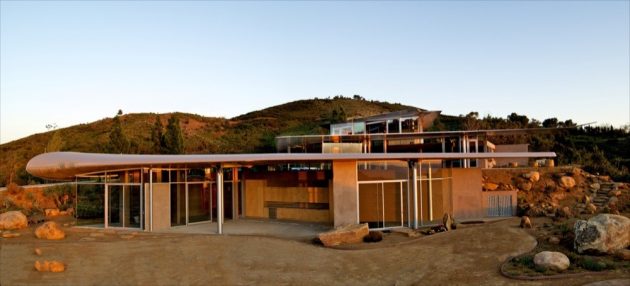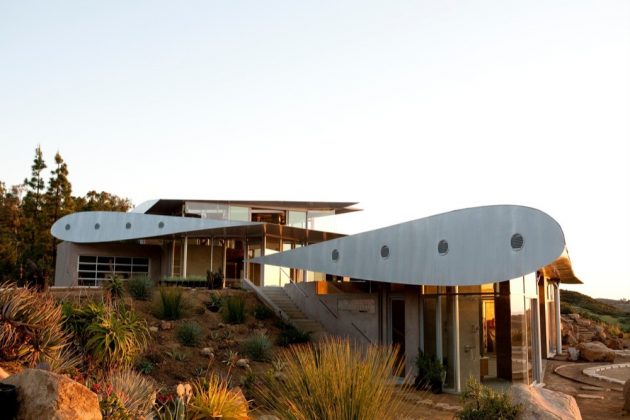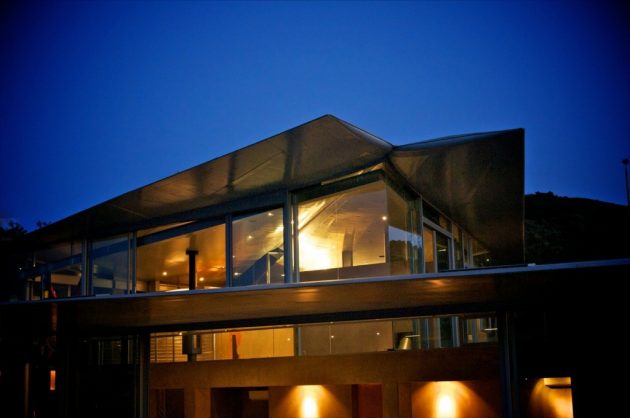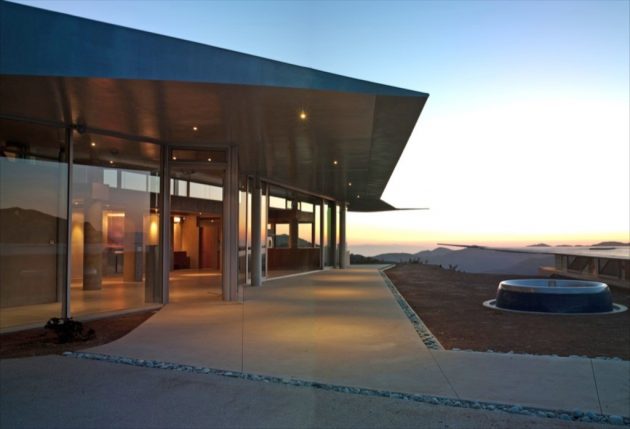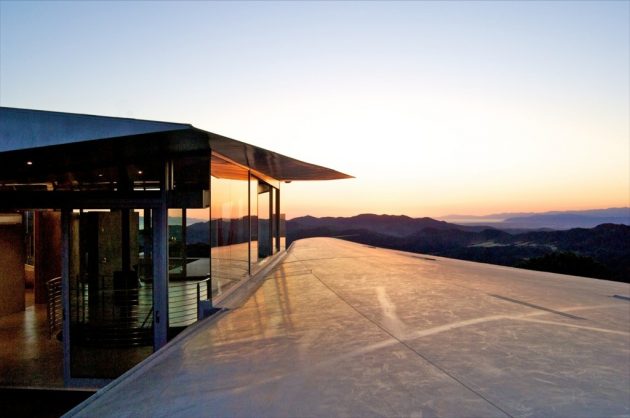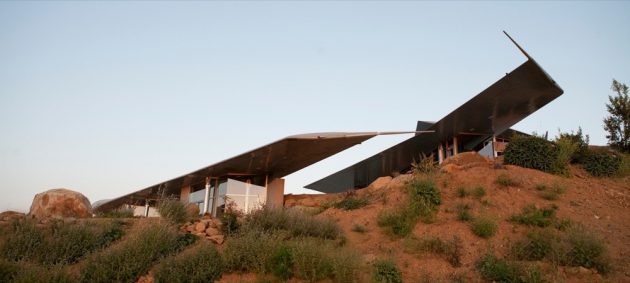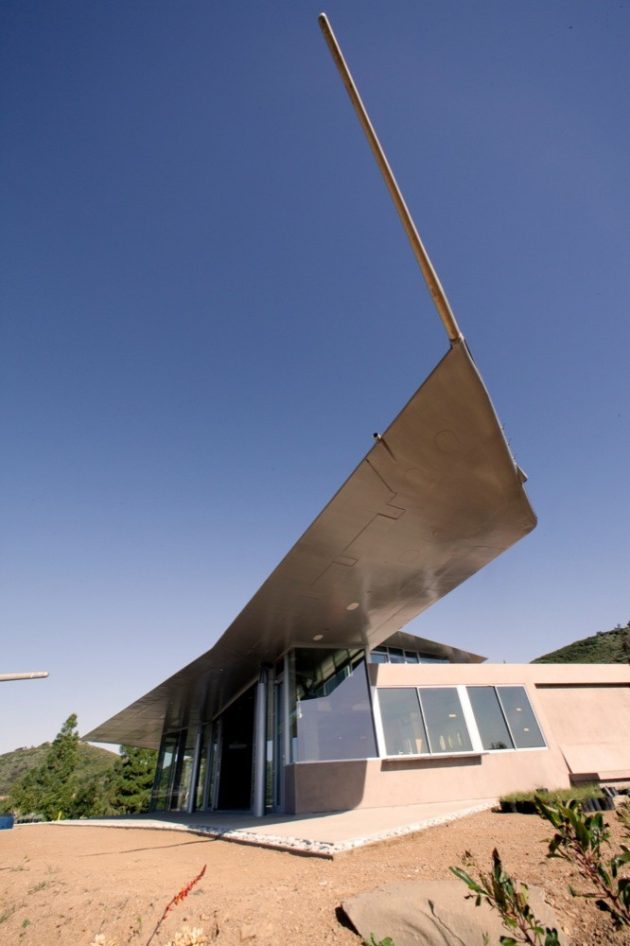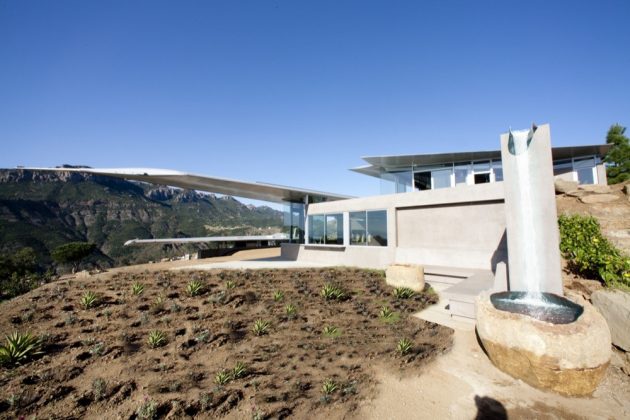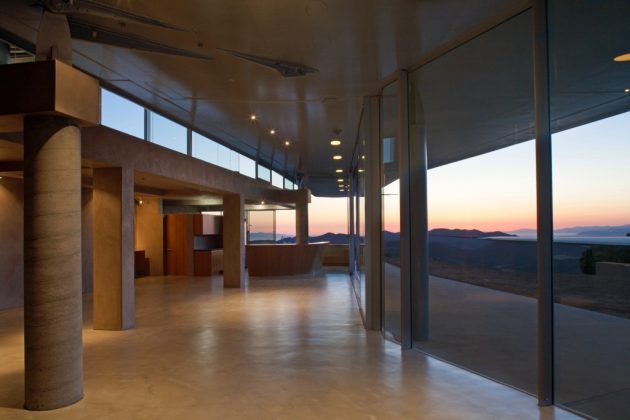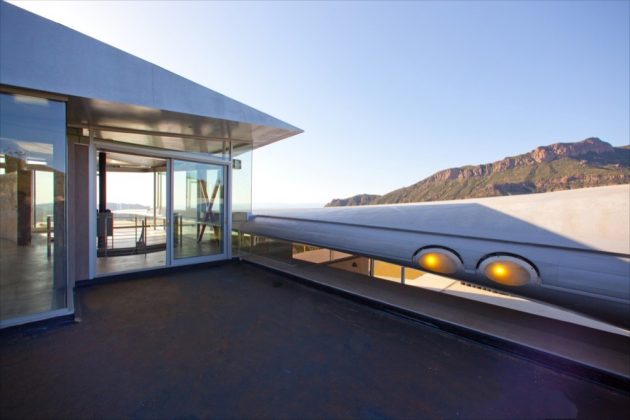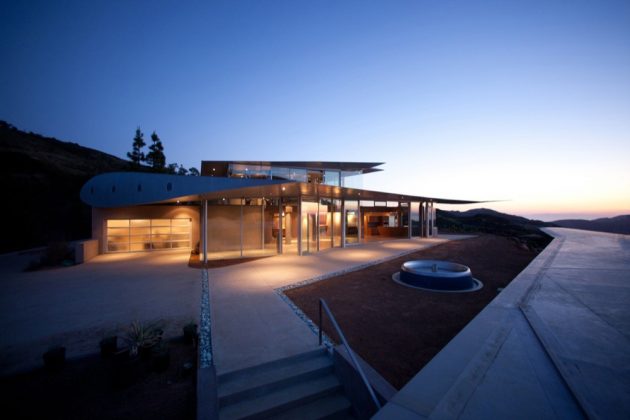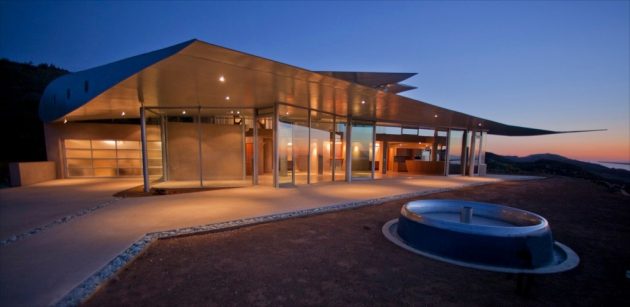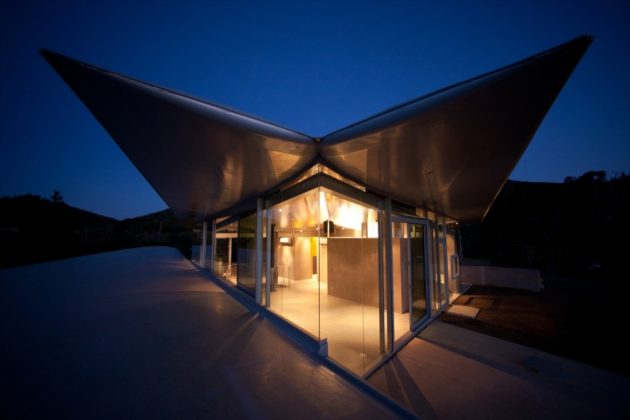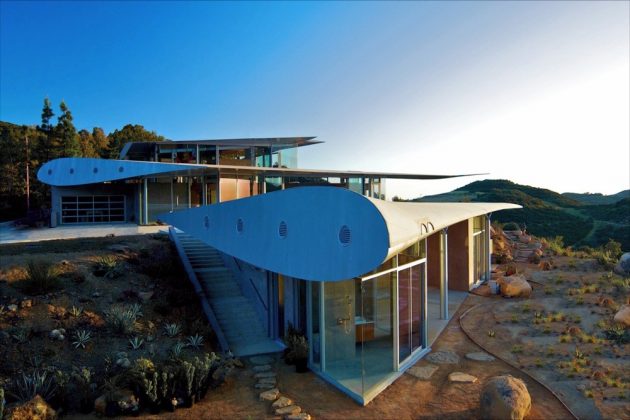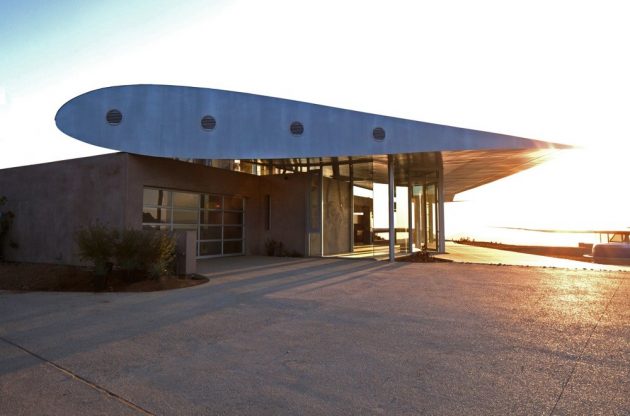Project: 747 Wing House
Architects: David Hertz Architects
Location: Malibu, California, USA
Area: 2,500 sf
Photographs by: Courtesy of David Hertz Architects
747 Wing House by David Hertz Architects
David Hertz Architects are a studio that has attracted quite some attention with their 747 Wing House project in Malibu, California. This is an absolutely unique residence because it’s roof is, you guessed it, made of actual wings of a Boeing 747 airliner.
It turns out the shape and size of the plane’s wings result in a perfect curvilinear material for a creative approach to a home’s roof design. Underneath the roof are plenty of floor to ceiling windows that let stunning sights of the Pacific Ocean and the Malibu mountainside make their way inside.
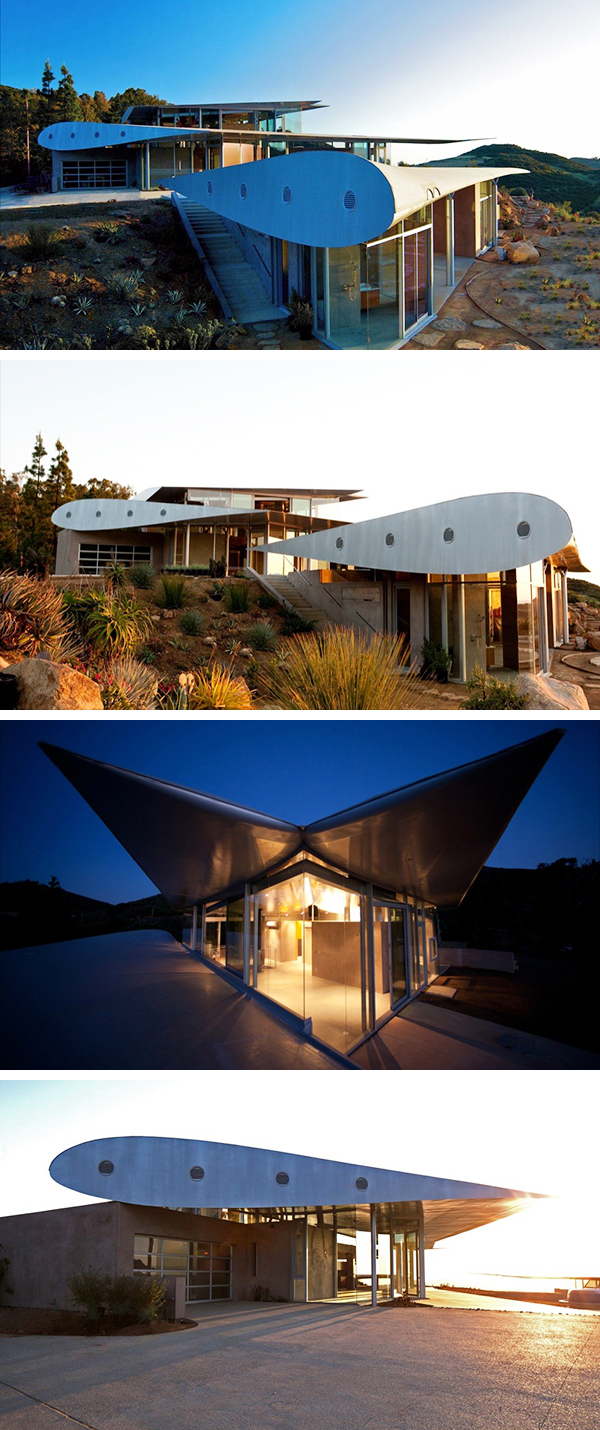
This project exists on a 55-acre property in the remote hills of Malibu with unique topography and panoramic views looking out to a nearby mountain range, a valley, and the Pacific Ocean with islands in the distance. In searching for inspiration, I imagined a roof structure that would allow for a un-obstructed view of the mountain range and distant views. The client, a woman, requested curvilinear/feminine shapes for the building. The progenitor of the building’s form was envisioned as a floating curved roof. It soon became apparent, that in fact, an airplane wing itself could work. In researching airplane wings and superimposing different airplane wing types on the site to scale, the wing of a 747, at over 2,500 sq. ft., became an ideal configuration to maximize the views and provide a self supporting roof with minimal additional structural support needed.
By incorporating many of the previous pads and retaining walls we sought to minimize significant grading and subsequent impacts to the existing topography and landscape. The wing structures are positioned to float on top of simple concrete walls that are cut into the hillsides. The floating roofs derive simple support from steel brace frames, which attach to strategic mounting points on the wing where the engines were previously mounted. Frameless, structural self-supporting glass creates the enclosure from the concrete slab on grade into the wing as roof. The scale of a 747 aircraft is enormous – over 230 feet long, 195 feet wide and 63 feet tall with over 17,000 cubic feet of cargo area alone and represents a tremendous amount of material for a very economical price of less than $50,000 dollars. Additionally, incorporating prefabricated lightweight components off site and delivering them to the remote site via helicopter, although at a cost of $8,000/hr. became realistic after considering the cost of getting traditional labor and material to the site.
After visiting the planes and verifying with the building department that there is nothing specifically prohibiting the use of an airplane wing as a roof, we began to explore the actual structure of the wings in particular and examined if other components might be used for additional accessory structures on the property. Although, we did find out that we have to register the roof of the house with the FAA (Federal Aviation Administration) so pilots flying overhead do not mistake it as a downed aircraft.
As we analyzed the cost, it seemed to make more sense to acquire an entire airplane and to use as many of the components as possible, like the Native American Indians used every part of the buffalo. Therefore, the property is to consist of several structures all made with components and pieces of a Boeing 747-200 aircraft.
The Main Residence uses both of the main wings as well as the 2 stabilizers from the tail section as a roof for the Master Bedroom. The Art Studio Building will use a 50-foot long section of the upper fuselage as a roof, while the remaining front portion of the fuselage and upper first class cabin deck will be used as the roof of the Guest House. The lower half of the fuselage, which forms the cargo hold, will form the roof of the Animal Barn. A Meditation Pavilion will be made from the entire front of the airplane at 28 feet in diameter and 45 feet tall; the cockpit windows will form a skylight. Several other components are contemplated for use in a sublime manner, which include a fire pit and water element constructed out of the engine cowling.
Environmental Features
Wing house, implements many environmental features. The sole fact that an entire 747 is used to construct a main residence and 6 ancillary structures, is environmentally sustainable in that the material being used is 100% post-consumer waste, and the plane has already been engineered so that additional material and man power are not necessary as they would be if the structure was to be built from the ground up. Solar power, radiant heating and natural ventilation is incorporated as well as high performance heat mirror glazing.
